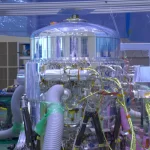Technology for humans has improved because of computers getting the capabilities for processing human language using machine learning algorithms.
Now, researchers intend to extend the same benefit to the vocalisations of animals, finally allowing humans to understand the other creatures that inhabit the Earth, and potentially even allow for conversations with more intelligent species such as whales or crows.
A number of scientists exploring approaches to investigate the inner lives of animals have come together to explain that technology has matured sufficiently now to allow humans to not only understand the vocalisations of animals, but monitor entire communities at once, providing valuable insights that can support conservation efforts. There are a number of challenges in realising the technology though.
AI technologies need to be trained on vast quantities of data. For example, Chat GPT-3 was trained on a text corpus the size of two million books, each the length of On the Origin of Species by Charles Darwin. Collecting such vast quantities of data on wild animals is a challenge, especially considering that many of them will need to be monitored near continuously, with specially designed sensor packages that do not interfere in their daily lives.
Researchers will then have to tag the data, and even experienced scientists can have trouble annotating recordings of bird calls, primate gestures or whale songs, and differentiate between similar types of signals. Additionally, another requirement is that the recordings must contain context of the recordings, individual identities, and who is talking to whom. The advancements could allow researchers to for example, re-introduce lost calls to wild populations of birds.
A paper describing the findings has been published in Science. Lead author of the paper, Christian Rutzsays, “The advent of machine learning has created exciting opportunities to make progress with the grand research challenge of understanding other animals. But there are significant risks that must be tackled head-on.” While there are approaches being used to address the technical challenges, there are ethical considerations as well, including the circumstances under which communicating with animals is acceptable.
Source: News9 Live










